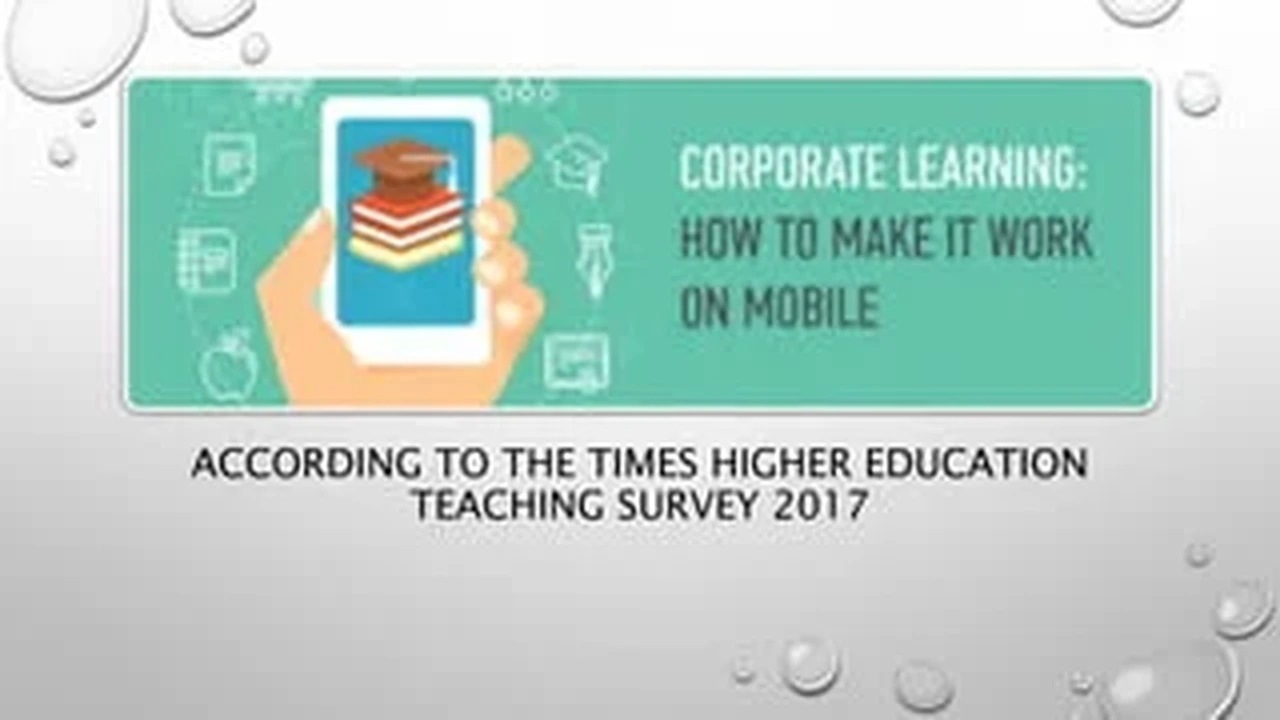Challenges and Opportunities for Online Learning in Rural Areas
Understand the challenges and opportunities for online learning in rural areas. Bridging the digital divide for education.

Understand the challenges and opportunities for online learning in rural areas. Bridging the digital divide for education.
Challenges and Opportunities for Online Learning in Rural Areas
Online learning has emerged as a transformative force in education, offering unparalleled flexibility and access to knowledge. However, its implementation and effectiveness are not uniform across all demographics and geographies. Rural areas, in particular, present a unique set of challenges and, paradoxically, significant opportunities for online learning. This article delves deep into the complexities of bringing digital education to remote communities, exploring the hurdles faced and the innovative solutions that are bridging the digital divide.
The Digital Divide Understanding Connectivity Gaps in Rural Education
The most fundamental challenge for online learning in rural areas is often the lack of reliable and affordable internet access. While urban centers boast high-speed fiber optic networks, many rural communities struggle with slow, inconsistent, or entirely absent broadband connections. This 'digital divide' isn't just about internet speed; it encompasses the availability of infrastructure, the cost of services, and the digital literacy of the population.
Infrastructure Limitations The Backbone of Rural Connectivity
In many rural regions, the physical infrastructure required for high-speed internet simply doesn't exist. Laying fiber optic cables across vast, sparsely populated areas is expensive and often not deemed economically viable by internet service providers (ISPs). This leaves many communities reliant on older, slower technologies like DSL or satellite internet, which can be prone to latency issues and data caps, making real-time online learning activities like video conferencing or interactive simulations difficult or impossible.
Affordability Barriers The Cost of Staying Connected
Even where internet access is available, its cost can be a significant barrier for rural families, who often have lower average incomes than their urban counterparts. High monthly subscription fees, coupled with the need for multiple devices and data plans, can place an undue financial burden on households, forcing them to choose between essential needs and educational connectivity.
Digital Literacy and Device Access Equipping Learners for the Digital Age
Beyond connectivity, many rural residents, particularly older generations, may lack the digital literacy skills necessary to navigate online learning platforms effectively. Furthermore, access to appropriate devices – laptops, tablets, or even reliable smartphones – can be limited. A single family computer shared among multiple students, or reliance on outdated devices, can severely hinder the online learning experience.
Overcoming Connectivity Challenges Innovative Solutions for Rural Broadband
Addressing the connectivity gap requires a multi-faceted approach, combining government initiatives, private sector innovation, and community-led efforts. Several technologies and strategies are proving effective in bringing reliable internet to rural areas.
Satellite Internet A Viable Option for Remote Locations
For the most remote areas, satellite internet remains a crucial option. Companies like Starlink (from SpaceX) and Viasat offer broadband internet services via satellite. Starlink, in particular, has gained significant attention for its low-Earth orbit (LEO) satellite constellation, which promises lower latency and higher speeds compared to traditional geostationary satellite providers. This makes it a more viable option for interactive online learning.
- Starlink:
- Use Case: Ideal for extremely remote areas with no terrestrial broadband options. Suitable for families with multiple online learners requiring stable video calls and streaming.
- Pros: High speeds (typically 50-200 Mbps), low latency for satellite internet, relatively easy self-installation.
- Cons: Higher upfront hardware cost (around $599 USD for the dish and router), monthly subscription fee (around $120 USD/month), requires clear view of the sky.
- Comparison: Significantly faster and lower latency than traditional satellite internet providers like Viasat, making it better for real-time applications.
- Viasat:
- Use Case: Good for areas where Starlink isn't available or for users with less demanding internet needs.
- Pros: Widely available, various plans to choose from.
- Cons: Higher latency than Starlink, speeds can be lower (typically 12-100 Mbps), often has data caps.
- Comparison: Generally more affordable monthly plans than Starlink, but with performance trade-offs.
Fixed Wireless Access FWA Bridging the Middle Mile
Fixed Wireless Access (FWA) utilizes cellular technology (like 4G LTE or 5G) to deliver broadband internet to homes and businesses without the need for fiber optic cables directly to the premises. An antenna on a tower transmits signals to a receiver at the user's location. This technology is often more cost-effective to deploy in rural areas than fiber.
- T-Mobile Home Internet:
- Use Case: Rural homes within T-Mobile's 5G or 4G LTE coverage area. Good for general online learning, streaming, and browsing.
- Pros: No data caps, relatively affordable monthly fee (around $50-60 USD/month), easy setup, no annual contracts.
- Cons: Performance depends heavily on cellular signal strength and network congestion in the area. Not available everywhere.
- Comparison: Often more affordable than satellite options and can offer comparable speeds to DSL, but coverage is key.
- Verizon 5G Home Internet:
- Use Case: Similar to T-Mobile, but relies on Verizon's 5G Ultra Wideband or 5G Nationwide network.
- Pros: Potentially very high speeds in 5G Ultra Wideband areas, no data caps, competitive pricing (around $35-50 USD/month for existing Verizon mobile customers).
- Cons: Limited availability, especially in very rural areas, as 5G Ultra Wideband deployment is still concentrated in urban/suburban regions.
- Comparison: Offers some of the fastest FWA speeds where available, but coverage is a major limiting factor for rural users.
Community Broadband Initiatives Local Solutions for Local Needs
Many rural communities are taking matters into their own hands, establishing municipal broadband networks or co-operatives. These community-owned networks prioritize local needs over profit, often offering more affordable and reliable services. Examples include local fiber projects funded by grants or local bonds.
Government Subsidies and Programs Bridging the Affordability Gap
Governments play a crucial role in bridging the affordability gap through subsidies and programs. In the US, programs like the Affordable Connectivity Program (ACP) provide discounts on internet service and connected devices for eligible low-income households. Similar initiatives exist in Southeast Asian countries, often focusing on expanding infrastructure and providing digital literacy training.
Pedagogical Adaptations Tailoring Online Learning for Rural Contexts
Beyond connectivity, the design and delivery of online learning must be adapted to the specific needs and contexts of rural learners. This includes considering cultural relevance, learning styles, and the availability of local support systems.
Blended Learning Models Combining Online and Offline
A purely online model may not always be feasible or optimal. Blended learning, which combines online instruction with in-person components, can be particularly effective. This might involve students completing online modules at home but attending weekly sessions at a local community center or school for hands-on activities, group work, or to access high-speed internet and devices.
Asynchronous Learning Prioritizing Flexibility
Given potential connectivity issues and varying schedules in rural households (e.g., agricultural work), asynchronous learning models are often more suitable. This allows students to access course materials and complete assignments at their own pace, without the need for real-time participation in live sessions. This requires well-designed, self-paced modules and clear instructions.
Localized Content and Contextual Relevance Making Learning Meaningful
Online learning content should be culturally relevant and contextualized to the experiences of rural learners. Incorporating local examples, case studies, and community-specific projects can make the learning more engaging and meaningful. For instance, an online agriculture course could focus on crops and farming techniques prevalent in the local region.
Teacher Training and Support Empowering Educators
Teachers in rural areas need adequate training and ongoing support to effectively deliver online instruction. This includes pedagogical strategies for online environments, technical skills for using learning management systems (LMS), and methods for engaging students remotely. Professional development programs tailored to rural educators are essential.
Opportunities for Growth Online Learning as a Catalyst for Rural Development
Despite the challenges, online learning presents immense opportunities for rural areas, potentially transforming education, economic development, and social equity.
Expanded Access to Quality Education Breaking Geographical Barriers
Online learning can provide rural students with access to a broader range of courses and educational programs that might not be available in their local schools. This includes advanced placement courses, specialized vocational training, and even university-level education, all without the need to relocate.
Skill Development for Local Industries Fostering Economic Resilience
Online platforms can deliver targeted skill development programs relevant to local industries, such as agriculture technology, sustainable tourism, or digital entrepreneurship. This can help rural communities diversify their economies, create new job opportunities, and retain local talent. For example, an online course on precision agriculture could equip local farmers with modern techniques.
Lifelong Learning and Community Empowerment Continuous Growth
Online learning isn't just for formal education; it also supports lifelong learning. Adults in rural areas can access courses for professional development, personal enrichment, or to acquire new skills for a career change. This fosters a culture of continuous learning and empowers individuals to adapt to changing economic landscapes.
Reducing Brain Drain Retaining Talent Locally
By providing access to quality education and skill development opportunities locally, online learning can help reduce the 'brain drain' – the exodus of young, educated individuals from rural areas to urban centers in search of better prospects. If rural communities can offer competitive educational and career pathways, more young people may choose to stay and contribute to their hometowns.
Global Connectivity and Cultural Exchange Broadening Horizons
Online learning connects rural learners with peers and educators from around the world, fostering cultural exchange and broadening perspectives. This global connectivity can expose students to diverse ideas, prepare them for a globalized workforce, and instill a sense of global citizenship.
Case Studies and Best Practices Learning from Success Stories
Numerous initiatives worldwide demonstrate the potential of online learning in rural settings. These examples offer valuable insights and best practices.
Project-Based Learning Engaging Rural Students
Many successful programs in rural areas utilize project-based learning, where students work on real-world problems relevant to their communities. This approach makes learning tangible and allows students to apply their knowledge in practical ways, often collaborating with local organizations or businesses.
Mobile Learning Initiatives Leveraging Smartphones
In regions where traditional internet infrastructure is lacking but mobile phone penetration is high, mobile learning (m-learning) initiatives have proven effective. Delivering educational content via smartphone apps, SMS, or even basic feature phones can reach a wide audience. This often involves bite-sized content and offline access capabilities.
Community Learning Hubs Centralized Access Points
Establishing community learning hubs – physical spaces equipped with computers, high-speed internet, and technical support – can serve as vital resources for rural learners. These hubs can be located in schools, libraries, or community centers, providing a dedicated environment for online study and collaboration.
The Path Forward Sustaining Online Learning in Rural Areas
For online learning to truly flourish in rural areas, sustained effort and strategic planning are crucial. This involves ongoing investment in infrastructure, continuous support for educators and learners, and policies that promote equitable access.
Policy and Funding Prioritizing Rural Digital Inclusion
Governments must prioritize policies and allocate sufficient funding to expand broadband infrastructure in rural areas. This includes grants for ISPs, incentives for innovative technology deployment, and programs to subsidize internet access and devices for low-income families. Long-term funding commitments are essential for sustainable progress.
Public-Private Partnerships Collaborative Efforts
Collaboration between government, private sector companies (ISPs, EdTech providers), and non-profit organizations is key. Public-private partnerships can leverage resources, expertise, and innovation to address the complex challenges of rural digital inclusion more effectively.
Continuous Evaluation and Adaptation Learning and Evolving
The landscape of technology and education is constantly evolving. Programs and initiatives for online learning in rural areas must be continuously evaluated, with feedback loops to adapt strategies and content based on the specific needs and outcomes of the communities they serve. This iterative approach ensures that solutions remain relevant and effective.
Online learning holds immense promise for rural areas, offering a pathway to equitable education and sustainable development. While the challenges are significant, they are not insurmountable. By focusing on robust connectivity, tailored pedagogical approaches, and strong community support, we can bridge the digital divide and unlock the full potential of online learning for every learner, regardless of their geographical location.
:max_bytes(150000):strip_icc()/277019-baked-pork-chops-with-cream-of-mushroom-soup-DDMFS-beauty-4x3-BG-7505-5762b731cf30447d9cbbbbbf387beafa.jpg)





